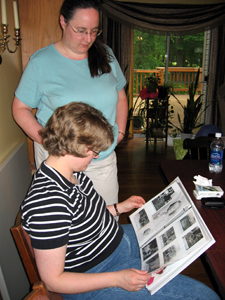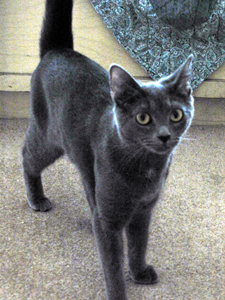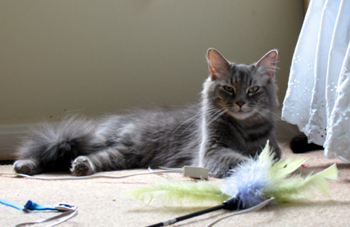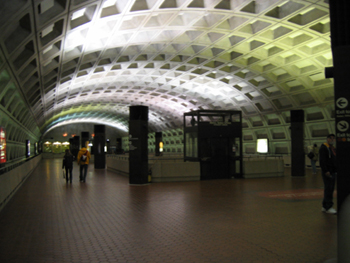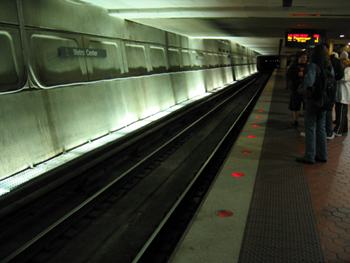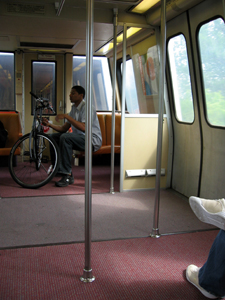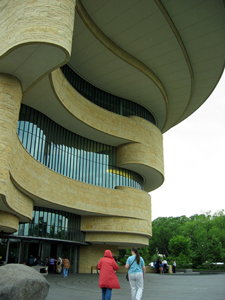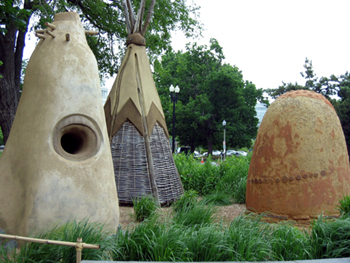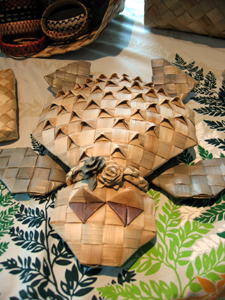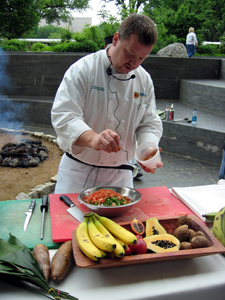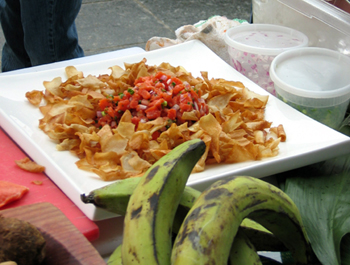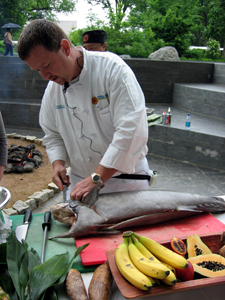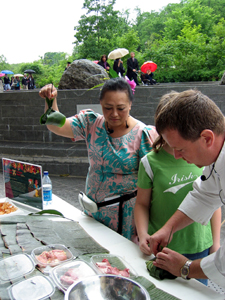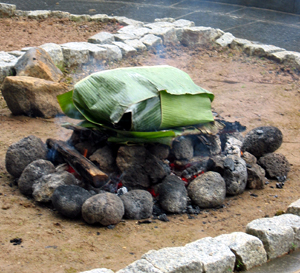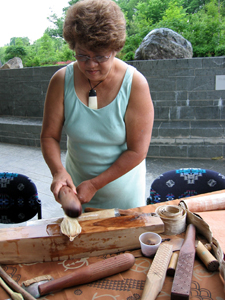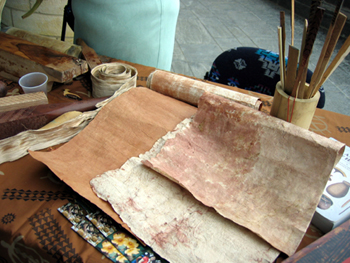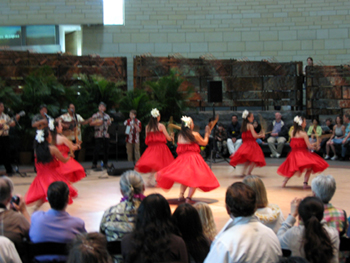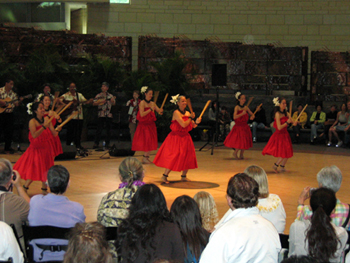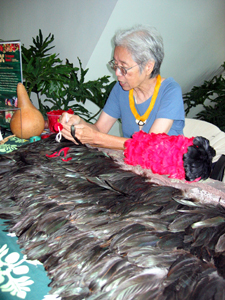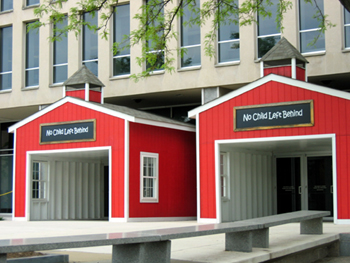Musings
an Online Journal of Sorts
By Alyce Wilson
May 22, 2008 - National Treasures
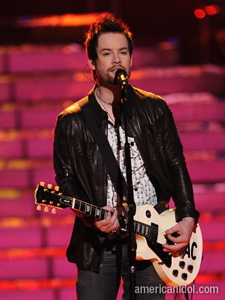 Every
American Idol
season offers up at least one shocking result. In season seven, that result
didn't come until the end.
Every
American Idol
season offers up at least one shocking result. In season seven, that result
didn't come until the end.
Based on their performances in the finale, many critics, including myself, predicted David Archuleta would win. The on-site judges also held this consensus, all but proclaiming Archie the winner.
Apparently, that was enough to motivate David Cook's fans to vote until their fingers fell off. After the two-hour final extravaganza, D.C. was declared the winner, much to his surprise.
He was one of the most gracious winners ever, insisting on sharing spotlight both with Archie and the other finalists as he sang a final time.
Nobody here is a loser, as David Archuleta is bound to be the most popular and, therefore, potentially the most successful runner-up since Clay Aiken. So kudos to them both. I honestly look forward to hearing future albums from both of them.
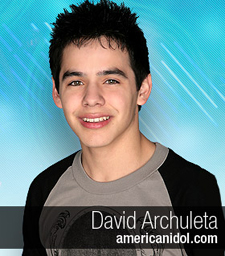
The final show offered a number of surprises, such as performances by big names such as Donna Summer, Brian Adams, ZZ Top and a heartbreakingly beautiful ballad by George Michael, a great way to create interest in his new tour, the first in 18 years.
Another fun, if slightly bizarre moment, was when host Ryan Seacrest joined in with some of the dancers, who are previous finalists of the FOX show So You Think You Can Dance, a new season of which begins soon. Yes, FOX used the opportunity to shamelessly cross-promote its other projects, including the new Mike Myers film, The Guru.
My favorite surprise was a video clip, supposedly featuring a classic performance by Gladys Knight and the Pips. Instead, editors combined vintage footage of Gladys along with new footage of Ben Stiller, Jack Black and Robert Downey Jr. as the Pips. The video is currently available on iTunes, with proceeds going to charity.
Another surprise: last year's winner, Jordin Sparks, performed. She has had to cancel her summer tour because of a vocal chord injury. While she seemed a little weaker earlier in the song, she was a trooper and sold the song as much as she can. Hopefully, it didn't cause further damage.
More on American Idol:
Musings on American Idol Season 7
On Sunday of Girls Weekend Out (GWO), we made the most of the time we had. My College Roommate and I had to be on the road by about 2 p.m., since she had to be back by a certain time.
We made a breakfast run to Dunkin Donuts for coffee and donuts. Upon our return, The Genealogist showed us some of her latest research: pictures of her ancestors she'd just acquired.
The Genealogist (standing) and My College Roommate
My primary breakfast was leftover sushi and rice, and I should have stuck to that, but I also had a donut. Only later, when I looked it up in the online Weight Watchers tracker, did I discover how sinful donuts are. At least I'll know better next time.
While we were figuring out what to do, I made another attempt to befriend the cats, who were having breakfast in The Genealogist's bedroom. They must be friendlier in the morning, because they both came up to me, although they stayed just out of reach. I even got one good picture of Stormy before she disappeared under the bed.
I also got several glamour shots of Misty, who warmed up to me after we played with a feathery cat toy.
The Hugger had suggested we visit one of the newest museums in the Smithsonian, the National Museum of the American Indian. They were having a Hawaiian cultural festival that weekend, called "E Pulama Hawai'i Kakou, To Treasure Hawaii." The Hugger was born and raised in Hawaii, and some of her family still lives there.
We spoke to The Paralegal on the phone and arranged to meet her at the museum. The rest of us drove to the nearest Metro station. It had been a good 20 years since I'd ridden the Metro, and it hasn't changed a bit. I think they're even the same trains. They looked very futuristic and modern in the '80s; now, they seem a bit retro.
The Genealogist had us got off at the stop closest to the museum, so we wouldn't waste time walking. This meant we didn't get to see the green, grassy National Mall, but there's always next time.
The day was a little iffy: it was threatening to rain. In fact, it did sprinkle a little bit on us, but we had come prepared with jackets and umbrellas, and the bad stuff held off until later in the day.
I had heard that the museum was an architectural wonder, and I was impressed, seeing it in person. The museum is made of Kasota limestone and built to mimic the look of natural rock formations in the American West.
My
College Roommate and The Genealogist
walk towards the entrance
Reproductions of traditional dwellings, outside the museum
Immediately inside the lobby, we noticed people doing demonstrations. A booklet about the festival told us more about who the demonstrators were and what they were doing. Lei-maker William Char Jr. was making some beautifully intricate leis, using a variety of flowers and plant matter.
Another woman, whose name wasn't listed in the program, displayed a selection of baskets and other items made from weaving plant materials. The Hugger pointed to some of the basic bracelets and said that her grandfather used to make them to sell. We were both impressed with an intricate woven turtle.
Outside at a fire pit, Chef Richard Hetzler was just starting a demonstration on Hawaiian cooking, with assistance from native Hawaiian Darlene Kahaulani Butts, who is the president, owner and chief cook of Makakoa Enterprises catering.
First, Chef Hetzler made a salmon ceviche, which was prepared by filleting and then dicing salmon and working in some Hawaiian sea salt, a lovely red form of salt that The Hugger says comes from an area that has red clay. The salmon would sit in a refrigerator for about 15 minutes, Chef Hetzler said. Afterwards, you would rinse out the salt and then add the other ingredients.
He added diced tomatoes, diced red onions, diced green onions, and then a dash more Hawaiian sea salt. I documented every step, so that I'd remember it later. Here, he's adding the sea salt before massaging together all the ingredients.
Chef Hetzler served the salmon ceviche with chips made from taro root, which he explained is a very versatile root used in much of Hawaiian cooking. We got to try some, and it was delicious: the salty taste counterbalanced the freshness of the vegetables, and the almost banana-like taro added an interesting texture.
Then he made a dish to be cooked in the fire pit on coals. He prepared a very large fish, which I believe he called a ulua, which is an important game fish in Hawaii. While he was removing the skin for this dish, he said he often serves skin on a fish, both because it keeps in the moisture and because it lets the diner know what fish is on the plate. He added that fish skin is also great for making fish stock.
After Chef Hetzler cut 3-ounce portions, he gave them to Darlene Kehaulani Butts, who put them in packets made from taro leaves, along with a small portion of pork and a small portion of chicken, sprinkled with Hawaiian sea salt. They used leaves to tie the packages.
Then, with some assistance from a sous chef, Chef Hetzler lay banana leaves over the coals. The packets were all put in a wire basket, which was placed on top of the banana leaves. More banana leaves went over the top. Chef Hetzler said the dish would cook in the fire pit for about an hour and a half. Since we might not be able to taste it, he let us know they were also serving the same dish in the cafeteria that day, as a special.
Afterwards, we hung around and spoke to him some more about Hawaiian cooking. The Hugger talked to him about some techniques she remembered from her childhood, and we sampled more of the salmon ceviche.
At a table off to the side, we spoke to Verna Takashima, who was demonstrating how to make kapa, a native fabric created from pounding wood from saplings. The resulting product resembled paper, but she told us that a weatherproofing oil would be used to make the fabric both durable and washable.
We had such a good time talking to them that I didn't realize we were missing out on a performance of Hawaiian hula and music, with music by The Aloha Boys and hula dancing by the Halau O' Aulani dance school.
Of course, all the good seats were already taken, and I had difficulty getting a good picture from where I stood. After several attempts, though, I captured a little of the spirit of the dance.
Finally, we watched Audrey Aukeleamanaali'i Wagner making feather leis, another very intricate, time-consuming art. She explained that featherwork can also be used for cloaks and capes, plumes, or crested helmets, which were used as headdresses for high chiefs and kings.
Then, since we were all hungry, we got some food in the cafeteria. There, you can buy dishes based on the native cuisines of a number of different native peoples. I chose some blue corn bread, yucca with tomato sauce and a jicama salad, all from the Northern Plains. We each got different dishes and swapped bites, which was terrific. If you're looking for an interesting food experience at the Smithsonian, stop by the National Museum of the American Indian.
Sadly, that's all the time we had, so we walked out together, promising to come back another time and tour the rest of the museum. The Paralegal was going in a different direction, so we bid her good-bye. Next, The Hugger took off for a different metro train, leaving just The Genealogist, My College Roommate and me. Soon enough, it was just My College Roommate and me, driving home, chatting about our weekend.
Let me end by including one last picture, taken on the way to the museum. The Department of Education building features some creative additions to the front doorways: little schoolhouses with the words "No Child Left Behind" on a facsimile of a chalkboard.
We left no children behind, My College Roommate and me. Only our memories.
Moral:
If the demonstrations are interesting enough, you never get into the
museum.
Copyright
2008 by Alyce Wilson
What
do you think? Share your thoughts
at Alyce's message board (left button):
![]()
![]()
